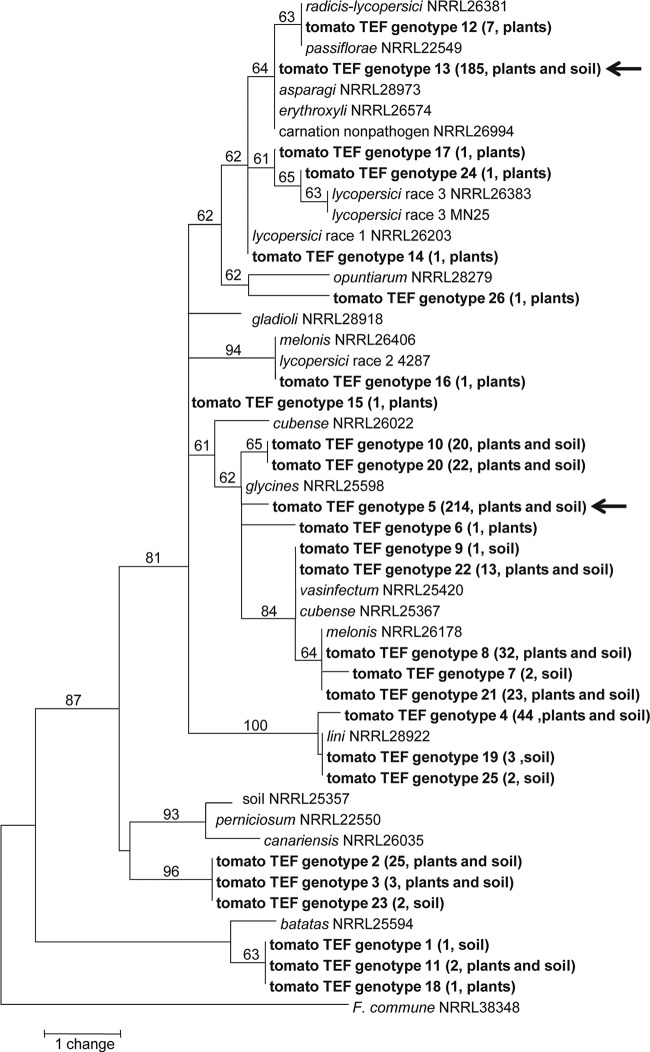FIG 5.
One of two most parsimonious trees based on the translation elongation factor 1α gene using maximum-parsimony analysis (81 steps; consistency index = 0.926; retention index = 0.968; rescaled consistency index = 0.897). The tree is rooted with F. commune NRRL 38348, and bootstrap support of >50% based on 1,000 replicates is indicated for each branch. Sequence types generated in this study from tomato fields are in boldface, with the number of isolates per sequence type and the original substrates (plants or soil) given in parentheses. The arrows indicate the two most abundant sequences types, ST 5 and ST 13.

